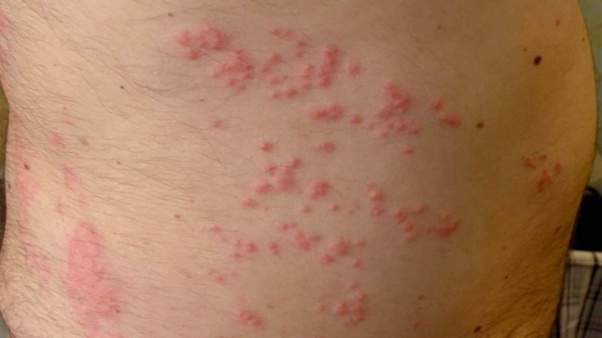BODY LICE

Definition: Body lice are tiny, wingless, parasitic insects that may be found on your body and in the seams and folds of your clothing. Body lice are a different type from head lice and pubic lice, though they’re all similar. Body lice feed on your blood. [1]
Body lice are most common where people live in crowded and unhygienic conditions. [1] The lice are easily spread by close contact and by sharing bedding or clothing.
Symptoms
Body lice can be found anywhere on your body but particularly are found in the seams of your clothing. Symptoms of body lice include:
- Intense itching on your body.
- A red rash. You may have an allergic reaction to the lice bites, resulting in a rash. [1]
- Lice or eggs (nits) on your body or in your clothing. Body lice feed on your blood but then return to your clothing to live and lay eggs. You may see lice on your body, but body lice primarily live in clothing. [1]
- Skin changes. If you’re infested with body lice for a long time, you may experience skin changes such as thickening and discoloration in the areas most heavily infested. [1]
Causes
Because lice feed on human blood and live in the seams and folds of clothing that is also where they lay their eggs and deposit waste matter. You can catch body lice if you come in direct contact with someone who has lice, or with infected clothing, towels, or bedding. Body lice are bigger than other types of lice [2], and are visible with the naked eye. Full-grown lice are the size of a sesame seed, have six legs, and are tan to greyish-white. [2]
You are more likely to get body lice if you have poor hygiene or live in close (overcrowded) conditions. Infestation is unlikely to last on anyone who bathes regularly, and who has at least weekly access to freshly laundered clothing and bedding. If the lice fall off of a person, they die within about 5 – 7 days at room temperature. [2]
Complications of Lice Infection
Body lice infestations usually cause minimal problems. However, a body lice infestation sometimes leads to complications [1] such as:
- Secondary infections. When body lice scratch and dig to feed on your blood, they may irritate your skin. If you scratch to alleviate itching, this can further irritate your skin. If your skin becomes raw from these irritations, other infections may develop [1] and you may need antibotics.
- Skin changes. If you’re infested with body lice for a long time, you may experience skin changes such as thickening and discoloration. [1]
- Spread of disease. Although rare, body lice can carry and spread some bacterial diseases, such as typhus, relapsing fever or trench fever. All of these diseases can be treated with antibiotics. [1] However if left untreated, these infections can result in death.
Treatment
Body lice are primarily treated by carefully washing yourself and contaminated items (especially clothing) with soap and water. In most cases, killing lice on your body isn’t difficult. The challenge is getting rid of all the nits and avoiding contact with other lice at home.
Over-the-counter lotions or shampoos (Nix, Rid, and others) are usually the first line of defense in treating lice. [1] However, if nonprescription products don’t kill the lice, your doctor can prescribe a stronger shampoo or lotion. Your doctor may prescribe lindane, a lotion treatment. Because of its toxicity, this is usually prescribed when other treatments fail. [1]
Apply lindane to the affected area and wash it off after eight hours. Your doctor may not recommend lindane if you weigh less than 110 pounds (50 kilograms), have used it in the past few months, are a women who is pregnant or breast-feeding, or are younger than 2 years of age. Side effects may include skin irritation, seizures and very rarely, death. Using lindane in higher than recommended amounts or for longer than recommended increases the risk of serious side effects. [1]
Written By Courtney M.L. Elm


